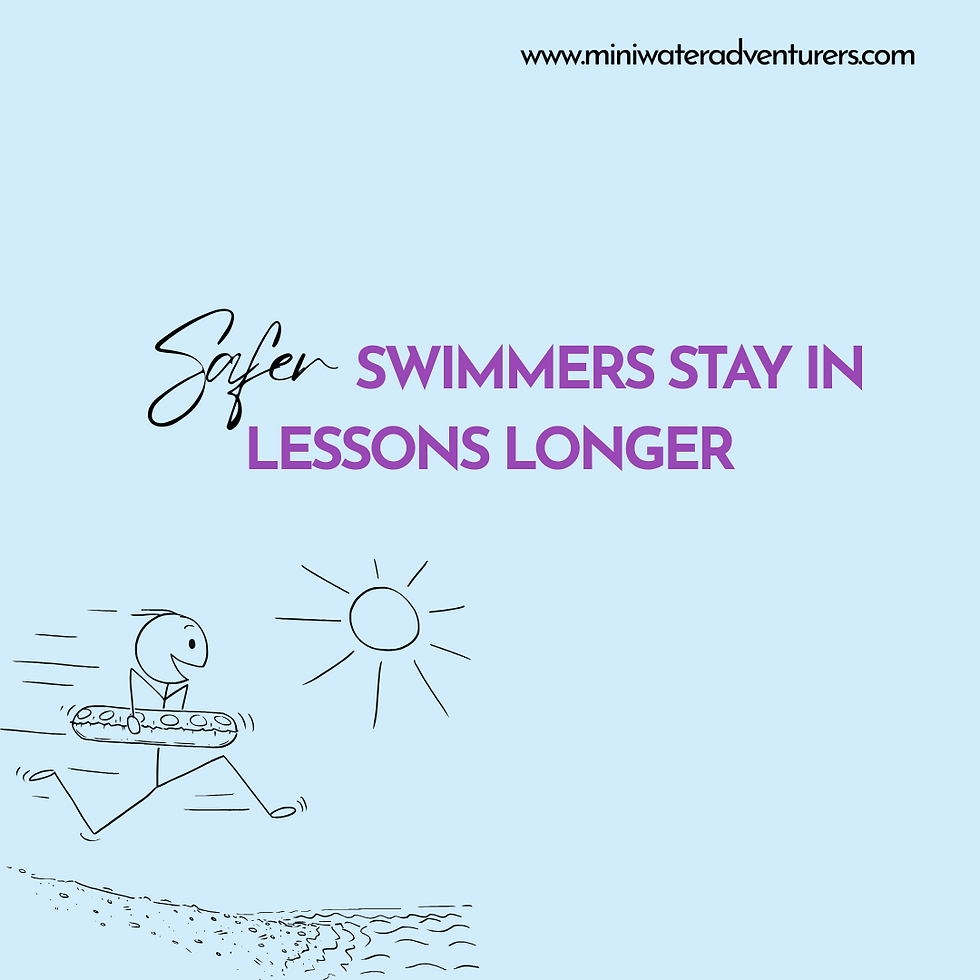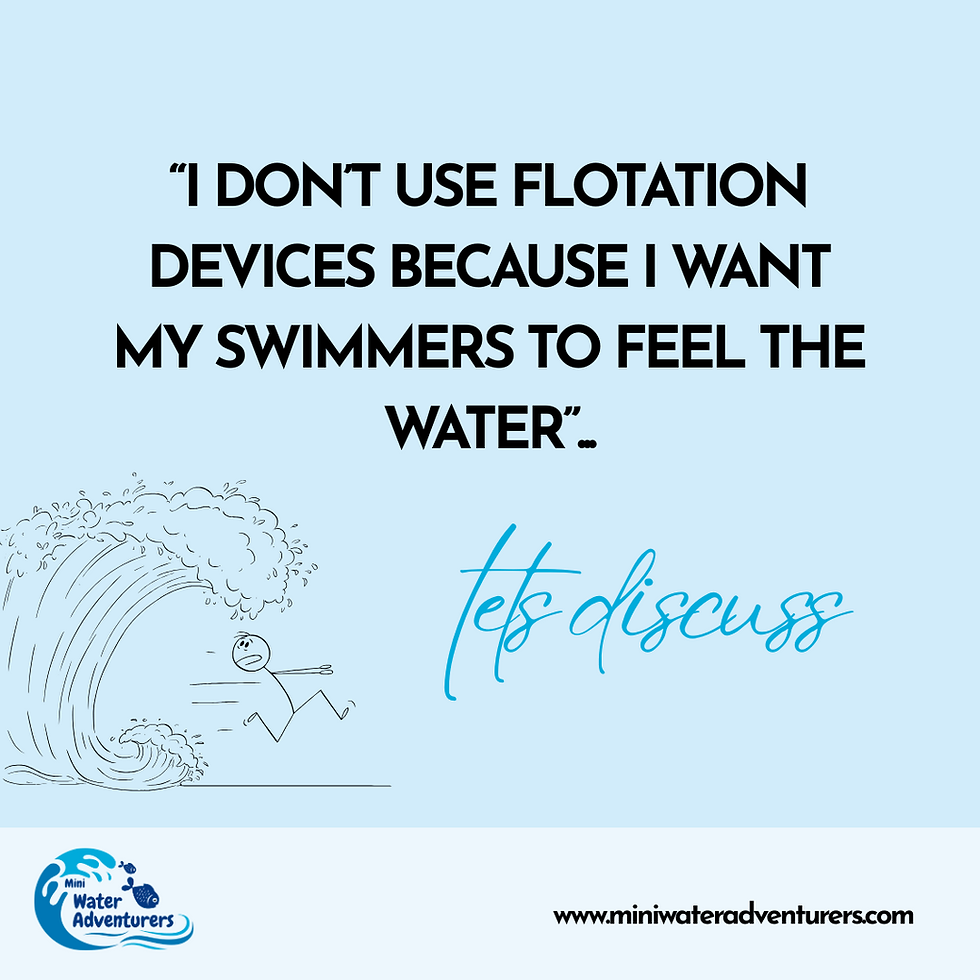Why do we still split “swim lessons” from “fun sessions”? It’s holding children back
- Helen Hughes
- Aug 25
- 5 min read

In many pools, lessons are serious and technical… and “fun” is ring-fenced for the last five minutes or a separate session entirely. That split isn’t just outdated; it works against how children actually learn, stay motivated, and become safer, more capable swimmers.
The uncomfortable facts
Children are leaving lessons far too early. Swim England’s research shows more than 3.4 million 7–11-year-olds in England fail to meet minimum swimming and water-safety standards, with the vast majority stopping lessons too soon. In 2025, Swim England reiterated that over 70% of children are being withdrawn before they’re competent. Regional data also shows many leave by age six. (Entry Point1, Yorkshire Post)
Basic competence is not just “a length”. By the end of primary, the curriculum expects pupils to swim 25m, use a range of strokes effectively, and perform safe self-rescue. Yet by Year 7, only around 70% can swim 25m, and far fewer demonstrate the wider safety skills. (GOV.UK, Entry Point1)
Swimming ability alone isn’t enough. Leading guidance stresses that “learning to swim” must include survival skills, safety behaviours and comfort in water, not just strokes. (Water Safety USA)
If children are leaving at six or seven because lessons feel dry, repetitive or “complete”, we’ve set the wrong incentives.

Why the ‘fun later’ model fails
Children learn skills—and keep coming back—when sessions meet core psychological needs: autonomy, competence and relatedness. Game-based approaches in PE consistently increase enjoyment, and enjoyment is a strong predictor of long-term participation. Across youth sport, lack of fun and low perceived competence are leading reasons for dropout. In swimming specifically, boredom and program design are frequently cited determinants. (BioMed Central, ResearchGate, PMC)
Play isn’t a perk—it’s how developing brains build executive functions, regulate emotions, and retain new movement patterns. The American Academy of Pediatrics calls developmentally appropriate play a “singular opportunity” for social-emotional and cognitive growth. (Pediatrics Online)
Technique v survival: a false binary
In the UK, the National Curriculum’s wording (“use a range of strokes effectively”) nudges provision toward stroke mechanics, often very early—sometimes at the expense of scenario-based competence. In contrast, parts of the USA and Australia have leaned hard into survival-first models for younger children. Neither extreme alone serves children best. The evidence-based position is both/and: strokes, yes—but developed through varied, playful, problem-rich practice that also rehearses rescue-ready behaviours. (GOV.UK)
Australia’s National Swimming and Water Safety Framework and Swim & Survive programme explicitly integrate swimming and survival/rescue strands and scenario learning—useful inspiration for balancing the equation. In the US, paediatric guidance frames lessons as one layer in multi-layered drowning prevention, again arguing for breadth over a single-method fix. (weswim.com.au, Royal Life Saving Society - Australia, American Academy of Pediatrics)

What the science says about how children learn movement
A 2025 scoping review of motor-learning methods for children learning to swim found research is sparse but points toward the promise of non-linear, exploration-rich approaches (e.g., varying constraints, playful tasks, analogies, external focus). Broadly across sport science, these methods build adaptable skills that transfer and stick—the very opposite of drilling a single “perfect” pattern. (PMC)
Separately, systematic reviews link swimming to fundamental movement skill development, and studies in PE show games-based instruction boosts engagement and learning. When children enjoy sessions and feel capable, they stay longer—and progress further. (PMC, BioMed Central)

The cost of keeping ‘fun’ at arm’s length
Older children often disengage when lessons become “stroke-tidying only”. That’s not a child problem; it’s a design problem. If progression is measured as “longer, straighter, neater”, many families conclude by age 7 that their child is “done” or “safe enough”. The data shows they’re usually not—and withdrawal at this stage leaves gaps in treading, floating to live, clothed swimming, orientation, and judgement. (Entry Point1)

A different blueprint: integrate play as standard
Here’s a research-aligned shift any programme can make now, without sacrificing standards:
Make games the delivery system, not the dessert. Use purposeful challenges (island hops, rescue relays, buoyancy puzzles, underwater clue hunts) to elicit body line, rotation, breath timing and rhythm. Then refine technique. This boosts autonomy, competence and relatedness—the SDT trio linked to persistence. (BioMed Central)
Teach survival skills through scenarios every week. Float-to-live for 60s, tread for 30s, entries/exits, clothed swims, safe self-rescue—taught playfully and often. Families then see visible safety progress, reducing premature exit. (Entry Point1)
Adopt a constraints-led toolbox. Vary depth, speed, distance, equipment, tasks and rules to promote self-organisation and adaptable strokes. Contemporary motor-learning approaches favour exploration and external focus over constant prescriptive cues. (PMC)
Measure what matters. Shift KPIs from “How far?” to “How adaptable?” Track tread duration, float-to-live consistency, calm problem-solving, clothing competency and decision-making under gentle pressure—alongside distance and stroke quality. (Water Safety USA)
Blend strokes and safety, early and always. The UK curriculum already expects both by the end of primary; programme design should reflect that from Stage 1 onwards. (GOV.UK)

The pay-off: safer swimmers who stay in lessons longer
When sessions are playful, purposeful and scenario-rich, swimmers don’t just master strokes—they want to keep going. That means fewer children leaving at six or seven, stronger competence by the end of primary, and a healthier pathway into later childhood and beyond. The destination isn’t a badge; it’s a capable, confident, adaptable young person around water.
So, why keep “fun” in a separate lane? Bring it into the centre of your pedagogy—and watch safety, skill, and retention rise together.

Need ideas to bring this to life? Join SWIM Squad.If you want more than inspiration, SWIM Squad gives you the how:
A growing library of ready-to-run games and activities.
Technique through play: tasks that shape body line, rhythm and timing—then quick cues to tidy.
Progressive tools guidance (including the Orca Swim Trainer): when to add/remove support, pad-removal plans, and session templates.
Monthly themes & challenge maps that keep older swimmers engaged (no more “just more lengths”).
Printable lesson cards and parent handouts to show competence beyond a distance badge.
Video demos and five-minute “grab-and-go” drills for busy days.
Planning templates & trackers that measure adaptability (tread time, calm recovery, clothing competency) alongside distance.
Community support in our members-only app, plus an optional WhatsApp group, live Q&As, and guest experts.
Member perks on workshops and resources.
Start with the free SWIM Teacher tier to explore, or unlock everything with SWIM Squad (£25/month, cancel anytime) and turn “fun as a reward” into fun as the method.





Comments